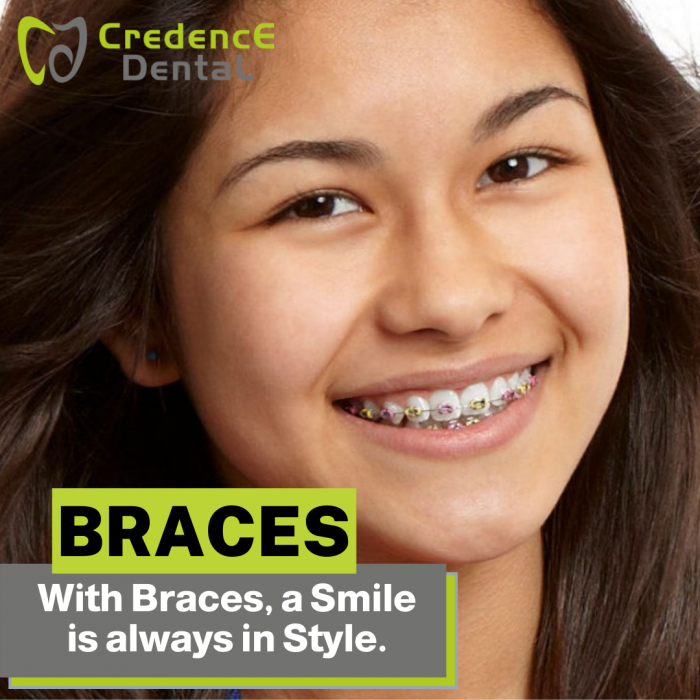While most dentists and dental clinics are closed across the world amidst COVID-19 concerns, it is indeed stressful if you are undergoing dental treatments or have a dental emergency. Well, staying locked at home can be traumatizing and further more worrisome when you encounter a dental issue. Worry not! We are always open to help you in many ways to keep your smile looking great while you stay at home. We’ve compiled a list of 6 important tips that you can practice to take care for your smile if you are wearing Braces or Aligners.
- Brush and floss your teeth regularly
It is always important to keep your teeth clean. Whether you are undergoing orthodontic treatment or not. It is highly recommend to brush twice a day – Once in the morning and once at night before bedtime. In addition to Brushing, dental surgeons advise flossing (little tricky with braces but can become a daily routine with practice), as it is one of the important and effective habits that can help dislodge food between your teeth and lower the bacteria
- Brush your teeth with a fluoride toothpaste and use of fluoride containing mouth wash
Orthodontists suggest soft-bristled toothbrush and fluoride toothpaste for brushing the teeth gently, as they should not dislodge the bracket. Fluoride toothpaste are still an essential part of good oral hygiene. This is simply because fluoride is a powerful anti-cavity agent! After brushing, clean your teeth with a fluoride mouthwash. This helps to keep white spots and cavities away.
- Don’t panic when brackets and arch wires become loose
If a wire or band breaks, don’t be scared! It can happen to anyone at any time during the orthodontic treatment. If the wire irritates you, gently push the irritating wire out of the way with cotton. Place the wet cotton on the wire if discomfort still exists. If the wire is loose and rubs your cheek, apply dental wax or soft chewing gum over it, to avoid hurting your mouth further or swallowing it. However, contact your dentist via online Dental Consultation to assess the severity and further actions
- Clean your aligners (if you wear them)
Once you remove the aligners, make sure you rinse them under running water before putting them back in your mouth. It is recommended to clean your aligners twice a day with soap and do not soak or scrub them in hot water and ensure to keep them away from direct sunlight. Rinse your mouth after every meal and brush and floss twice daily
- Avoid Hard and sticky foods
Do not try to eat anything hard ‘and Sticky foods like nuts, popcorn, peanut butter, corn chips, caramel and whole raw fruit especially can break your brackets. If you are wearing metal braces these hard foods can crack your brackets. The best option would be to consume soft foods as advised by your dentist, or processed food which is easier to chew. Also, don’t forget to drink water as much as you can without ice
- Quit smoking and chewing tobacco
In general, smoking is harmful to your oral health and can cause oral cancer. It has been observed that smoking can adversely affect the performance of orthodontic treatments. The nicotine content in tobacco may cause stains on the braces especially for those wearing clear aligners. In worst cases, smoking may even hinder the braces’ ability to align teeth.
If you are undergoing an orthodontic treatment, then tobacco chewing is not recommended at all, because tobacco can get stuck in the brackets and stain the teeth as well as the Invisalign or ceramic braces.
Most importantly, follow the orthodontist’s instructions properly. If you were prescribed to wear retainers or aligners, make sure you wear them for the recommended amount of time and follow the guidelines exactly as instructed.
These are general tips that you can ensure while staying at home to get the best out of your Orthodontic Treatment with Braces.
Call your dentist right away if you have any queries.
Our orthodontic team is available for Online Dental Consultation and we would be happy to answer any questions or discuss any issues you may have.
Call us or Whatsapp us at +91-9141160212 to book an appointment today!


